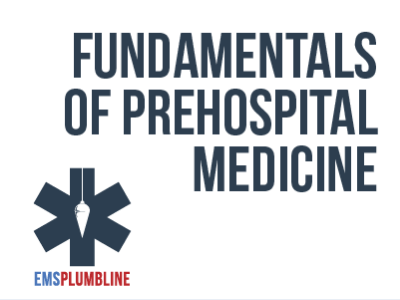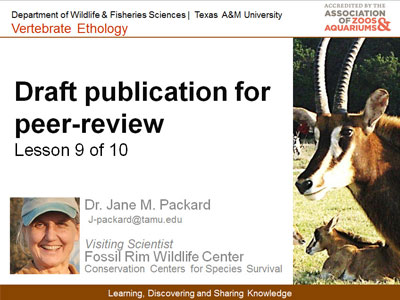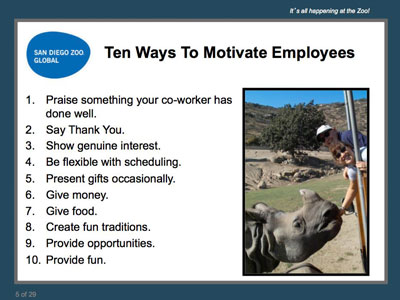 |
Advanced Interpersonal Communication: Building Relationships Through Feedback (Instructor Guide) |
0.75 |
Providing feedback is an important element in building a relationship because it closes the circle of communication that links the listener and speaker. Until feedback is given, the people involved in communication are either speakers or listeners. Once a speaker receives feedback, the roles switch, and both parties are equally involved in a conversation.
In this course you will learn to use paraphrasing effectively, and provide positive and constructive feedback in a business setting.
This Instructor's Edition of this course includes notes and suggestions to assist you in presenting the material, whether in an in-person classroom setting or as an instructor-led online or distance-learning course. It also provides you with the answers to questions found in mid-lesson activities, as well as in the quiz that concludes the course. |
 |
Advanced Interpersonal Communication: Building Relationships Through Feedback |
0.75 |
Providing feedback is an important element in building a relationship because it closes the circle of communication that links the listener and speaker. Until feedback is given, the people involved in communication are either speakers or listeners. Once a speaker receives feedback, the roles switch, and both parties are equally involved in a conversation.
In this course you will learn to use paraphrasing effectively, and provide positive and constructive feedback in a business setting. |
 |
Building Upward: Pulse Oximetry for BLS Providers |
1.00 |
Pulse oximetry is a tool that can give a medic a great deal of insight into the patient's condition. Paramedic Instructor Peter Bonadonna does a fantastic job of illustrating the fundamental issues that surround pulse oximetry readings and how they should be interpreted. Final Exam: This multiple-choice exam is designed to test your knowledge of the material you just reviewed. You have two attempts to gain an 80% or higher on this exam. Please take your time and answer each question carefully. |
 |
Quality Management: Fundamentals of Quality Management (Instructor Guide) |
0.50 |
Quality management is the process, directed by upper management, through which a company continuously tries to improve the quality of workmanship, processes, and products. The primary aim of quality management is to organize project planning, product design, and program implementation, such that resulting products and services are available to customers at a high quality and reasonable cost.
In this course you will learn to: identify the concepts commonly associated with quality management, the role of management in implementing quality, and the steps an organization should follow to incorporate improvements into daily management, and identify the ways in which variation leads to loss, select characteristics of common causes of variation, and identify frequent sources of variation.
This Instructor's Edition of this course includes notes and suggestions to assist you in presenting the material, whether in an in-person classroom setting or as an instructor-led online or distance-learning course. It also provides you with the answers to questions found in mid-lesson activities, as well as in the quiz that concludes the course. |
 |
Quality Management: Fundamentals Of Quality Management |
0.50 |
Quality management is the process, directed by upper management, through which a company continuously tries to improve the quality of workmanship, processes, and products. The primary aim of quality management is to organize project planning, product design, and program implementation, such that resulting products and services are available to customers at a high quality and reasonable cost.
In this course you will learn to: identify the concepts commonly associated with quality management, the role of management in implementing quality, and the steps an organization should follow to incorporate improvements into daily management, and identify the ways in which variation leads to loss, select characteristics of common causes of variation, and identify frequent sources of variation. |
 |
Introduction to Evaluation |
2.00 |
Quality programs operate with the idea that they will change, improve, and grow. Knowing how to identify areas needing improvement is the key to program quality, which must be continually evaluated to identify strengths and weaknesses. In this course, participants will learn what evaluation is, why it is important for programs, and ways they can evaluate their own programs. |
 |
Draft Publication: Writing for Peer Review |
1.00 |
Ready to publish the results of your behavioral inquiry? Listen to the experiences of a research team that takes the outline from a presentation and turns it into a manuscript for peer review. Learn about the checklist of do's and don'ts that editors and reviewers will look for in evaluating your manuscript. Share creative tips for getting past writer's block. |
 |
Safety and Survival in an Active Shooter Event (Corrections) |
1.00 |
Recent national tragedies remind us that the risk is real: an active shooter incident can happen in any place at any time. The best way to make sure you are safe is to prepare ahead of time and be ready. This course will take you through 3 different phases of an active shooter event: 1. Before: Prepare Ahead of Time; 2. During: Safety and Survival During an Active Shooter Event; and 3. After: Safety After an Active Shooter Event. |
 |
Roaring Rewards: Creating a World Famous Employee Recognition Program |
1.00 |
Recognizing employees for hard work is an essential component to employee loyalty and a contributing factor to healthy workplace morale. Some employers go to great lengths to come up with recognition programs while others rely on the conventional method of simply praising employees for a job well done. There are a number of reasons you can choose to recognize employees and a number of ways to create an awards program. Take an inside look at how the world famous San Diego Zoo has truly established itself as an employer of choice with its innovative and robust "Roaring Rewards" employee recognition program. |
 |
Observation and Assessment of the Learning Environment (CDA 7) |
2.00 |
Research finds that the quality of a child’s early learning environment has a significant impact on his well-being and ability to learn. This course focuses on two significant aspects of environmental quality: the relationships and rich interactions that happen in the classroom, and the physical setting and learning materials. Special emphasis is placed on observation and assessment of the learning environment to make improvements and support positive outcomes for children. The course covers how professionals who work with young children can use observation and assessment as a way to support children’s development (social, emotional, cognitive, physical, and approaches to learning), inform teaching practices, enhance interactions with children, and plan activities for young children. This course is designed to be part of a Child Development Associate (CDA) Credential™ curriculum, and covers CDA subject area 7: Observation and Assessment. It can also be taken as a stand-alone learning event or as part of a broader early childhood education curriculum. |











